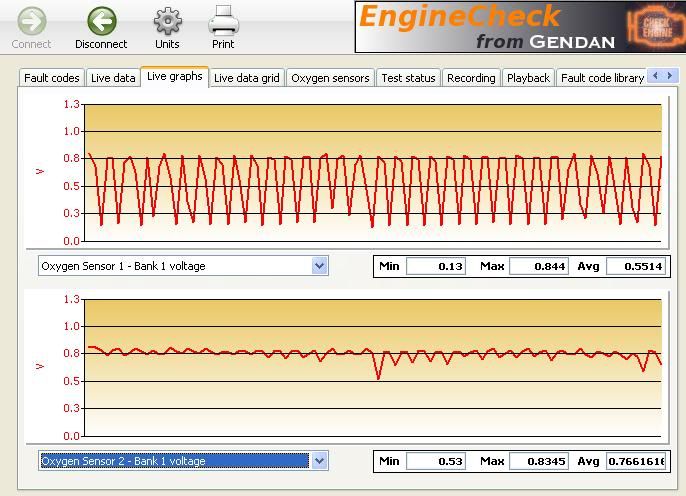|
Author
|
Message |
|
|
 Posted: Mon Oct 10, 2011 9:09 am Posted: Mon Oct 10, 2011 9:09 am |
 
|
|
|
|
Joined: Jun 19, 2010
Posts: 1600
Trade Rating: +4
Location: South Bucks
|
 |
How do you test a lambda sensor with a multi-meter and what am I looking for on a dual-lambda exhaust system (2.0i 16v)
thanks in advance!!
| |  |
|
|
 |
 | |  |
| Down to just the 1.4 HDi. Cayman Green 2.0i CC sold. | |
 | |  |
|
|
|
 |
|
|
 Posted: Mon Oct 10, 2011 9:24 am Posted: Mon Oct 10, 2011 9:24 am |
 
|
|
|
|
Joined: Feb 07, 2010
Posts: 13077
Trade Rating: +65
Location: England
|
 |
4-5 ohms on pins one and two on lambda

| |  |
|
|
 |
|
|
 |
|
|
 Posted: Sat Oct 22, 2011 2:35 am Posted: Sat Oct 22, 2011 2:35 am |
 
|
|
|
|
Joined: Mar 16, 2011
Posts: 3
Trade Rating: 0
Location: Maidstone
|
 |
Hello,
Lee, is it right that the Voltage should be that high for the after cat sensor? Only asking as I thought that meant a rich mixture, so would have expected a low voltage reading compared to the pre cat sensor.
Cheers
| |  |
|
|
 |
|
|
 |
|
|
 Posted: Sat Oct 22, 2011 3:34 am Posted: Sat Oct 22, 2011 3:34 am |
 
|
|
|
|
Joined: Aug 01, 2011
Posts: 390
Trade Rating: 0
Location: Bath UK
|
 |
On tickover with a warm engine then the O2 sensors should look like this. Pre cat oscillating around every second and post cat fairly stable

If the pre cat sensor showed consistently high voltage then it might well mean an over rich condition (or an exhaust leak) but with the post cat sensor then it's simply saying "lots of oxygen here after the cat" The cat converts oxides of nitrogen (NOx) to produce carbon dioxide(CO2), nitrogen(N2), and water(H2O) so lots of oxygen there
| |  |
|
|
 |
|
|
 |
|
|
 Posted: Mon Oct 24, 2011 12:57 am Posted: Mon Oct 24, 2011 12:57 am |
 
|
|
|
|
Joined: Mar 16, 2011
Posts: 3
Trade Rating: 0
Location: Maidstone
|
 |
Many thanks for that! Seems to be exactly what mine is looking like, mine is maybe a touch higher Voltage in the pre CAT sensor but still oscillating as it should.
Hope it will go through the MOT now!
Bugger, just realised you said at tick over, what should it look like at high idle?
| |  |
|
|
 |
|
|
 |
 |